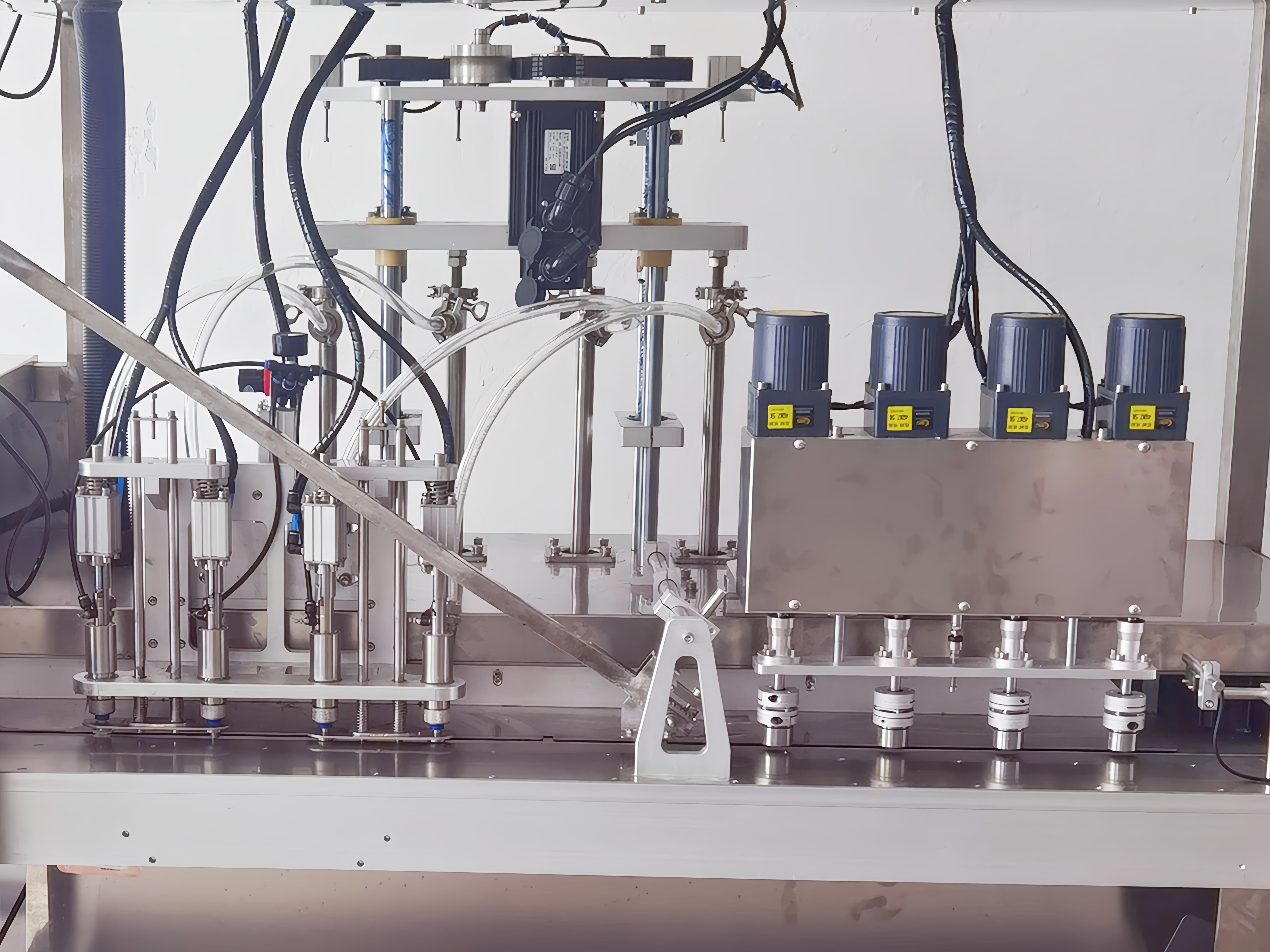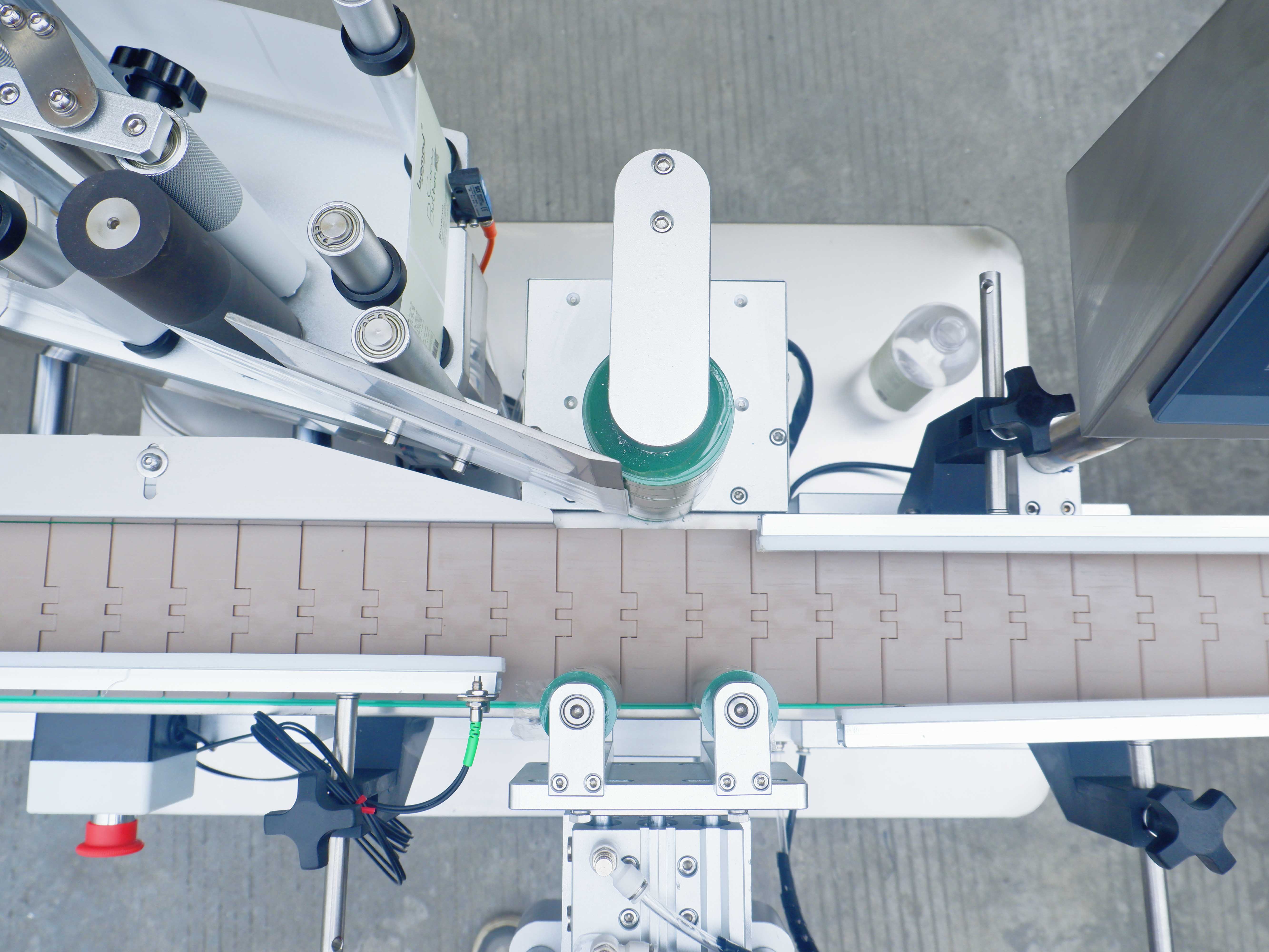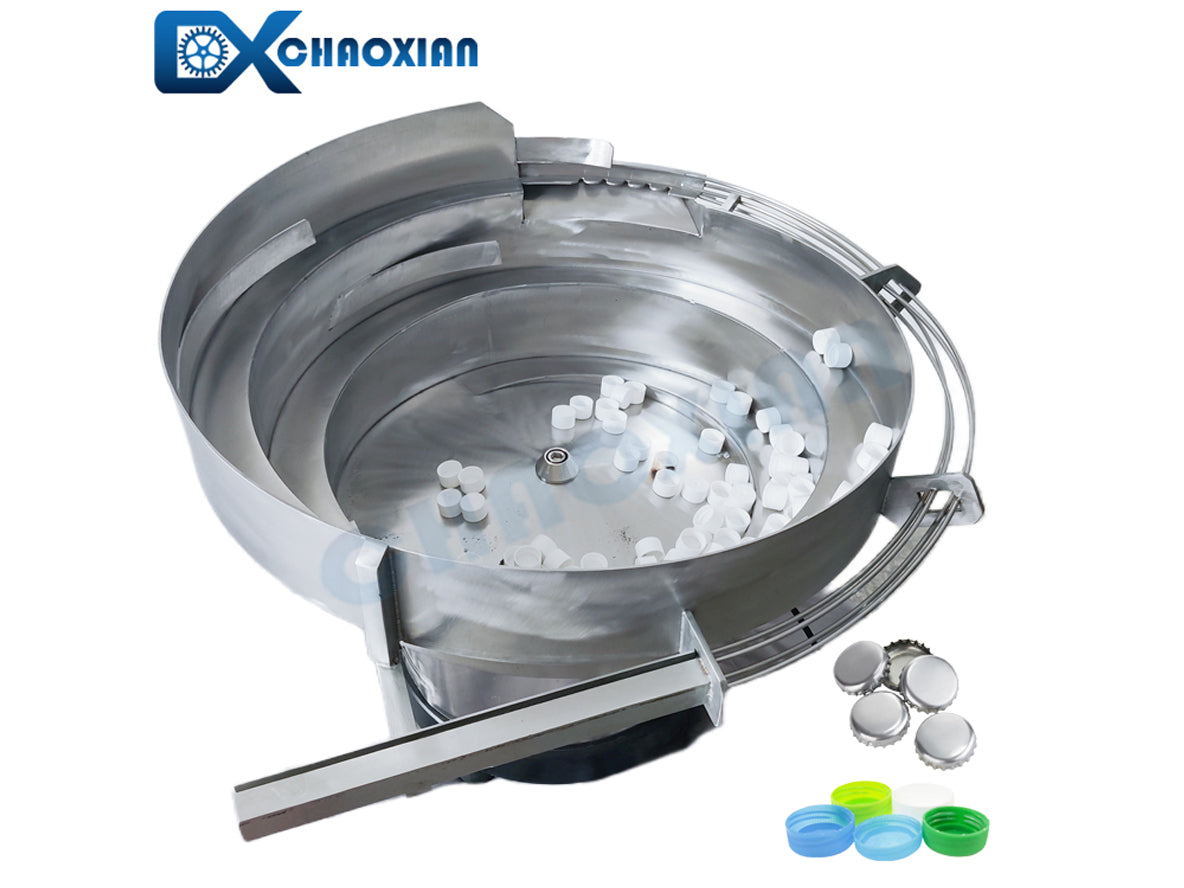Installation Precautions, Daily Use and Maintenance of Essential Oil Filling Production Line
1. Introduction
In today's competitive essential oil market, product quality and production efficiency have become key factors for the success of enterprises. As an important link in the production process, the accuracy of installation, the standardization of daily use and the timeliness of maintenance of the essential oil filling production line are of vital importance to ensure product quality, improve production efficiency, reduce production costs and extend the service life of equipment. As a leading enterprise specializing in the design and manufacture of liquid filling production lines such as essential oil filling machines, capping machines, labeling machines, etc., CX PACKING MACHINE has provided efficient and reliable filling solutions for many customers with its excellent technology and rich experience. This research report will deeply explore the key points of installation, use and maintenance of essential oil filling production lines, and combine CX PACKING MACHINE's professional products and services to provide you with comprehensive and detailed guidance.
2. Precautions for installation of essential oil filling production lines
(I) Site preparation
1. It is essential to choose a dry, well-ventilated and dust-free installation site. Direct sunlight may cause the equipment to overheat and affect the performance of electronic components and mechanical parts; a humid environment can easily cause equipment rust and electrical components to short-circuit. The site should be away from areas with strong vibration or electromagnetic interference to ensure the stable operation of the filling production line.
2. The installation ground must be flat and solid, able to withstand the weight of the filling production line and the vibration and impact generated during operation. It is recommended to reinforce the ground, such as laying a thickened concrete layer or installing shock-absorbing pads.
3. Reasonably plan the site layout, and fully consider the size of the equipment, the activity space of the operators, the storage area of raw materials and finished products, and the maintenance channel. Ensure that there is enough spacing between the parts to facilitate operation and maintenance, while improving production efficiency and safety.
(II) Equipment Acceptance
1. After the equipment arrives at the installation site, first conduct a careful appearance inspection of each component of the filling production line provided by CX PACKING MACHINE. Check whether there is any damage, deformation or scratches caused during transportation, and ensure that all parts are complete and intact.
2. Carefully check whether the technical parameters and specifications of the equipment are consistent with the contract agreement, including key indicators such as filling speed, accuracy, power, and voltage. At the same time, check whether the accompanying instructions, certificates, warranty cards and other documents are complete. If there are any discrepancies, please contact CX PACKING MACHINE in time to negotiate a solution.
(III) Installation sequence
1. Strictly follow the requirements of the equipment installation instructions provided by CX PACKING MACHINE. Generally speaking, the installation should be carried out in the order of main body first, accessories second, mechanical first, electrical second. First install the main frame and major mechanical structures, such as the filling head of the filling machine, the bracket of the conveyor belt, etc., and then install the accessories, such as pipes, valves, sensors, etc.
2. During the installation process, pay special attention to the firmness of the connection between the components. Use suitable screws, nuts, washers and other connectors, and ensure that the tightening force is moderate to avoid over-tightening or over-loosening. For key parts, such as the connection between the filling head and the liquid storage tank, the connection between the conveyor belt and the drive motor, etc., multiple inspections and tightening should be carried out.
(IV) Electrical installation
1. Electrical wiring should strictly comply with national safety standards and relevant specifications. All wires should be protected by wire troughs or wire pipes to avoid wires being exposed to the outside and prevent mechanical damage and electromagnetic interference. The installation of wire troughs and wire tubes should be firm and neat to facilitate future maintenance and inspection.
2. When connecting electrical equipment, ensure that the wiring is correct and firm. Wires of different colors should correspond to the correct wiring terminals to avoid wrong connection leading to equipment failure or damage. At the same time, ensure good grounding to prevent electrical failures and leakage accidents and ensure the safety of operators.
(V) Pipeline installation
1. In view of the special properties of essential oils, high-quality pipeline materials that meet food hygiene standards, such as stainless steel pipes, should be selected. Stainless steel pipes have good corrosion resistance and cleanliness, which can ensure that essential oils are not contaminated during transportation. Before installation, carefully check whether the inner wall of the pipeline is smooth, whether there is dirt, rust or burrs, and if there are any problems, they should be dealt with in time.
2. The installation of the pipeline should be kept horizontal and vertical, avoiding bends and dead ends. This helps the essential oil flow smoothly, reduces resistance and pressure loss, and is also convenient for cleaning and disinfection. At the bends of the pipeline, suitable elbows and connectors should be used to ensure tight connections and no leakage.
3. When installing pipeline valves, pay attention to the direction and opening and closing status of the valve. The handle or handwheel of the valve should be easy to operate and clearly marked to facilitate flow adjustment and control during the production process.
(VI) Commissioning and acceptance
1. After the equipment is installed, comprehensive commissioning is an essential link. First, mechanical commissioning is carried out to check whether each moving part is flexible and smooth, and whether there is any jamming or abnormal sound. Then carry out electrical debugging to check whether the function of the electrical control system is normal and whether the response of each sensor and actuator is accurate and timely.
2. Filling accuracy debugging is one of the key points of debugging. Through multiple filling tests, adjust the flow and time parameters of the filling head to ensure that the filling volume meets the predetermined accuracy requirements. At the same time, check the sealing quality, labeling position, etc. to ensure that the performance of the entire filling production line meets the design standards.
3. After the debugging is completed, relevant personnel should be organized for acceptance. The acceptance personnel should include equipment management personnel, operators, technicians, etc. The acceptance should be carried out in accordance with the acceptance standards and procedures established in advance, and the various performance indicators of the equipment should be tested and recorded in detail. If problems are found, they should be rectified in time until the equipment fully meets the requirements before signing the acceptance report.
III. Key points for daily use of essential oil filling production line
(I) Operator training
1. CX PACKING MACHINE provides professional pre-job training for operators to ensure that they are familiar with the working principle, structural composition, operation process and safety precautions of the filling production line. The training content should include basic operations such as equipment start-up, stop, speed regulation, filling volume adjustment, fault alarm processing, as well as daily maintenance and maintenance methods.
2. Regularly conduct skill assessment and retraining for operators to adapt to equipment updates and technological development. The assessment content may include practical operation skills, theoretical knowledge, troubleshooting capabilities, etc. Retraining should be carried out in a targeted manner based on the assessment results and production needs to continuously improve the technical level and emergency handling capabilities of operators.
(II) Inspection before starting the machine
1. Before starting the machine every day, the operator should carefully check all parts of the equipment. Check whether the conveyor belt is deviated or loose, whether the filling head is blocked or leaking, whether the heating element of the sealing machine is working properly, and whether the indicator light and display screen of the electrical control system are normal.
2. Check whether the liquid level, temperature and viscosity of the essential oil meet the filling requirements. If the liquid level is too low, it should be replenished in time. If the temperature and viscosity are not suitable, take corresponding heating or cooling measures to ensure the filling quality and accuracy.
3. Check the lubrication of the equipment and add or replace the lubricating oil in time. Check whether the lubrication points have sufficient grease, whether the oil quality is good, and whether there is any leakage. For parts that require manual lubrication, the operation should be carried out in accordance with the prescribed methods and cycles.
(III) Operation specifications
1. Operators must strictly abide by the operating procedures formulated by CX PACKING MACHINE in their daily work, and must not arbitrarily change equipment parameters and operating modes. It is strictly forbidden to perform illegal operations during the operation of the equipment, such as forced shutdown, overload operation, etc.
2. During the filling process, pay close attention to the filling volume, sealing quality and label pasting. If problems such as excessive filling volume deviation, loose sealing, and skewed labels are found, the machine should be stopped and adjusted in time to ensure that the product quality meets the standards.
3. Reasonably arrange production tasks to avoid long-term continuous operation of equipment. According to the performance and production needs of the equipment, formulate scientific working hours and rest times, and leave enough cooling and maintenance time for the equipment to extend the service life of the equipment.
(IV) Safety protection
1. Operators must correctly wear labor protection supplies, such as work clothes, gloves, masks, goggles, etc. Protective equipment should comply with relevant standards and requirements, and be regularly inspected and replaced to ensure good protective performance.
2. During the operation of the equipment, it is strictly forbidden to put your hands into the filling area, sealing area and near the moving parts to prevent mechanical injury accidents. It is strictly forbidden to place debris and tools on the equipment to avoid falling into the equipment and causing malfunctions and accidents.
3. Regularly check the effectiveness of safety protection devices, such as emergency stop buttons, protective doors, protective covers, etc. Ensure that these devices can work properly and can quickly stop the equipment in an emergency to protect the personal safety of operators.
IV. Daily maintenance points of essential oil filling production line
(I) Cleaning and maintenance
1. After the end of production every day, comprehensive cleaning of the equipment is one of the important tasks of daily maintenance. Use a clean damp cloth or brush to remove dust, oil and residual essential oil on the surface of the equipment. For difficult-to-clean parts, special cleaning agents can be used, but be careful to choose products that are non-corrosive to equipment materials.
2. Regularly deep clean the inside of the equipment, including filling pipes, liquid storage tanks, filters, etc. These parts are prone to accumulate dirt and bacteria, affecting the quality of essential oils and the performance of the equipment. When cleaning, the relevant parts should be disassembled, thoroughly cleaned with warm water and detergent, then rinsed with clean water, dried and reinstalled.
3. During the cleaning process, pay attention to protecting the electrical components and sensors of the equipment to avoid water or detergent from entering and causing damage. At the same time, use soft cleaning tools to avoid scratching the surface of the equipment.
(II) Lubrication maintenance
1. Lubricate each lubrication point of the equipment regularly according to the requirements of the equipment lubrication manual. The lubrication cycle and type of grease should be determined according to the frequency of use of the equipment, the working environment and the characteristics of the components. Generally speaking, high-speed running parts such as bearings and gears require more frequent lubrication.
2. It is crucial to choose the right lubricant. Lubricants with appropriate viscosity, antioxidant and rust-proof properties should be selected according to the operating temperature, load conditions and speed requirements of the equipment. At the same time, pay attention to the shelf life and storage conditions of the lubricant to avoid using deteriorated lubricants.
3. When adding lubricants, ensure that the refueling port is clean to prevent impurities from entering the lubrication system. The amount of oil should be moderate. Too much or too little will affect the lubrication effect. For automatic lubrication systems, the working conditions of the oil pump, oil pipe and distributor should be checked regularly to ensure normal lubrication.
(III) Regular inspection
1. Conduct a comprehensive inspection of the equipment once a week, including the wear of mechanical parts, the connection of electrical parts, the sensitivity of sensors, etc. When checking mechanical parts, pay attention to the wear degree of gears, racks, chains, belts, etc. If there is severe wear, they should be replaced in time. When checking electrical parts, check whether the wiring is loose, whether the plug is in good contact, and whether the electrical components are working properly.
2. Calibrate the accuracy of the equipment once a month to ensure the accuracy of parameters such as filling volume, sealing pressure, and labeling position. Calibration work should be carried out by professional technicians, using standard measuring tools and instruments for detection and adjustment.
3. Regularly check the vulnerable parts of the equipment, such as filling head seals, conveyor belts, capping heads, cutters, etc. These parts are prone to wear or damage during long-term use and should be replaced in time to ensure the normal operation of the equipment. At the same time, the inventory management of wearing parts should be done well to ensure that they can be replaced in time when needed.
(IV) Troubleshooting and maintenance
1. When the equipment fails, the operator should stop the machine immediately and report it to the maintenance personnel in time. Before waiting for the maintenance personnel to arrive, the fault site should be kept as original as possible so that the maintenance personnel can accurately determine the cause of the fault.
2. The maintenance personnel should quickly and accurately determine the cause of the fault based on the fault phenomenon. The mechanical, electrical, pneumatic and other systems of the equipment can be comprehensively inspected by observation, measurement, testing and other methods. After determining the cause of the fault, effective maintenance measures should be taken to restore the normal operation of the equipment as soon as possible.
3. After the maintenance is completed, the equipment should be tested and tested to ensure that the fault is completely eliminated and the equipment performance is restored to normal. At the same time, the maintenance process should be recorded, including the cause of the fault, maintenance measures, replaced parts, etc., for future reference.
V. CX PACKING MACHINE's services and support
(I) Pre-sales consultation and solution design
CX PACKING MACHINE has a professional sales team and technical experts who can provide customers with detailed pre-sales consulting services. According to the customer's production needs, product characteristics and site conditions, we tailor the most suitable essential oil filling production line solution for the customer. In the process of designing the solution, we fully consider the customer's budget, production efficiency and product quality requirements to ensure the feasibility and economy of the solution.
(II) Installation, commissioning and training
After the equipment is delivered, CX PACKING MACHINE will send experienced installation and commissioning personnel to the customer's site to install, commission and train the equipment. The installation and commissioning personnel strictly follow the installation specifications and commissioning procedures to ensure that the equipment can be installed quickly and accurately and achieve the best operating state. At the same time, we provide comprehensive and systematic training for the customer's operators so that they can master the operation and maintenance skills of the equipment.
(III) After-sales service and guarantee
CX PACKING MACHINE has established a complete after-sales service system to provide customers with timely and efficient after-sales service support. During the operation of the equipment, if you encounter any problems, you can contact the after-sales service personnel at any time. The after-sales service personnel will respond to the customer's needs as soon as possible and solve the problems quickly through telephone guidance, remote assistance or on-site maintenance. In addition, CX PACKING MACHINE also provides customers with regular return visits and equipment inspection services to promptly discover and solve potential problems and ensure the stable operation of the equipment.
(IV) Spare parts supply and technology upgrade
In order to ensure the normal operation of customer equipment, CX PACKING MACHINE has established sufficient spare parts inventory to provide customers with the required spare parts in a timely manner. At the same time, the company continues to carry out technological innovation and product upgrades, providing customers with technical upgrade services for equipment, so that customers' filling production lines always maintain advanced technical levels and competitiveness.
VI. Conclusion
The installation, use and maintenance of the essential oil filling production line is a systematic project, which requires strict compliance with relevant specifications and standards, attention to details and strengthened management. As a leading enterprise in the industry, CX PACKING MACHINE not only provides customers with high-quality filling production line equipment, but also provides customers with comprehensive technical support and service guarantees. Through correct installation, standardized use and timely maintenance, combined with CX PACKING MACHINE's professional services, it can ensure the stable operation of the essential oil filling production line, improve production efficiency, ensure product quality, and create greater economic and social benefits for the enterprise. At the same time, with the continuous advancement of technology and changes in market demand, CX PACKING MACHINE will continue to be committed to research and development and innovation, provide customers with more advanced, efficient and intelligent filling solutions, and work with customers to create a better future.
https://cxpackingmachine.com/collections/filling-machines



